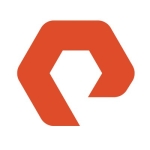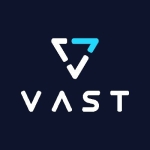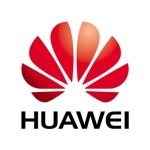How has it helped my organization?
All-Flash FAS:
We were beginning to have performance problems. Our databases were getting larger and larger, and we needed to move to something that had that low latency, and this has greatly helped us with this.
Learn about the benefits of NVMe, NVME-oF and SCM. Read New Frontiers in Solid-State Storage.
What is most valuable?
All Flash FAS:
One of the most valuable features is the very low latency, especially when it comes to the databases, very demanding applications. Also I like the very small form factor, compared with the older models; what used to take seven or eight racks now use four. It's just amazing. The savings in power, cooling, and everything else is just incredible.
What needs improvement?
All-Flash FAS:
They could maybe make the documentation more available. Every time I want to find a document, I have to log in with my username and password. If I go to Google and look for stuff, it's sometimes hard to find. Things like that.
They have several issues that have been solved with the new line of products that they showed us at a recent NetApp conference; they really solved a lot of things I didn't like. For instance, when you allocate spare drives, you can only allocate one spare drive per node. If you have one spare drive, you can either go through node A or node B, and once you assign it, that's it. You have to know if you need to use spare drives. With the new product line, that no longer applies. That is one thing I didn't like, but they fixed it in the new release.
EMC VMAX 10K:
If you look at their CLI or their GUI, it looks like there isn’t any order to anything; it's just horrible. To improve it, they would have to re-architect the whole thing from the bottom up. I don't see them doing that anytime soon, and I can see why not. They are very loyal to their customer base. People have been writing scripts for their systems for 30 years, and they don't want to break those scripts. In order to support those people, there are a lot of things they can't change, and that's what's really holding them back when you compare them to NetApp or something else.
What do I think about the stability of the solution?
All-Flash FAS:
I've only had it for three months but so far, no problems. It's been great; it's been pretty stable.
EMC VMAX 10K:
It's very complex, but if you get it to work after a very long process or
if you have it working already, the thing never fails. You can use it, leave it on an island and you'll never touch it again. It's very stable, and we kind of like that.
Then, if you want to change things around, such as take the data out and put it somewhere else, such as FlexClone, you can't do that; you couldn't do that with an EMC.
What do I think about the scalability of the solution?
All-Flash FAS:
I only have the one, so I haven't really scaled that all that much. It looks like from the specs and everything else, you can scale it incredibly easily.
EMC VMAX 10K:
We only have that one, so I can't really comment on its scalability. It looks like it could be scalable, but we're not thinking of going in that direction.
How are customer service and technical support?
All-Flash FAS:
I might have used technical support a couple of times when installing the All-Flash FAS. They were great. There were a couple of times when I had to get on WebEx with them and they walked me through whatever I had to do. It was awesome.
When a drive fails in the NetApp, they send me a replacement and I just put it right in the array. I don't have to wait for anybody to do anything.
EMC VMAX 10K:
When it comes to the EMC, everything is so complicated that even when the drive fails, an engineer has to come onsite to change it. It is that bad.
Learn about the benefits of NVMe, NVME-oF and SCM. Read New Frontiers in Solid-State Storage.
Which solution did I use previously and why did I switch?
I was not involved in the decision process to invest in the All-Flash system. It was just given to me, I took it and I just ran with it.
Before we switched to the All-Flash, we were using the old FAS. It was also NetApp. It was a 3100 series. They got deprecated and we went to the All-Flash.
How was the initial setup?
All-Flash FAS:
I already had some prior knowledge of the spinning FAS systems. Compared to those, this was much easier. It took us something like three hours to set it all up. It was really fast.
EMC VMAX 10K:
I was not involved in setting up the VMAX. I just have to deal with it.
Which other solutions did I evaluate?
Before choosing this product, we did not really evaluate other options. We have an EMC VMAX 10K array, and the thing just sucks. We also used it mainly because we are required by politics not to be locked to one specific vendor. As an engineer, I can tell you that NetApp is the best solution; we all know that. We're slowly pushing management to try to change their model. What NetApp sells you that nobody else has is the feature set; you get the FlexClone, the SnapMirrors, and it's all very easy to use. God, the EMC is so difficult that it sometimes makes no sense. It's a very reliable solution. If you get it to work, it just works but then again, I have so many things I can't really do with it.
It's getting to the point that every time we get a new application, every time we get a new requirement for storage, we don't even think of the VMAX, we put it on the NetApp, because it's so much easier to work with.
For instance, we have a UAT environment that can't really work with the EMC, because the EMC doesn't have a FlexClone capability that the NetApp does. Every time something else or something new comes in, we have to ignore the EMC and just put it on the NetApp. For the stuff that's working there right now, it works great, but for the new things that come along, it doesn't work so well.
The most important criteria for me when selecting a vendor to work with are the ease of use of course, stability, reliability, and feature set.
What other advice do I have?
Talk to your peers. Go talk to the industry; talk to all the people in the industry. See what they're using. See what their thoughts are. I think that if we had done that from the beginning, we might not have done it the way we did. Maybe we would have gone NetApp all the way; I don't know. That's one of the things I would do I guess, in hindsight.
Disclosure: My company does not have a business relationship with this vendor other than being a customer.











